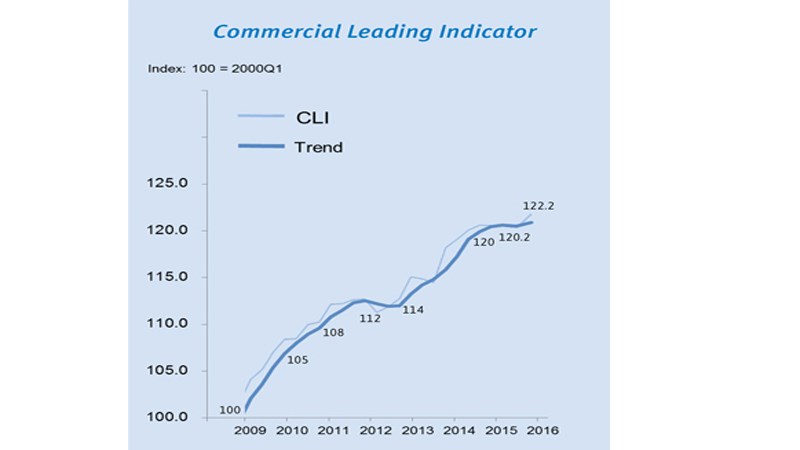A closely watched barometer of commercial real estate action has hit its highest level in history, propelled by strong growth in the provincial economy, according to the BC Real Estate Association (BCREA).
BCREA’s Commercial Leading Indicator (CLI) increased 1.7 index points in the second quarter to a new high of 122.2, up 2.2 per cent compared to the second quarter of 2015.
The index, which tracks specific economic data to forecast the commercial real estate market, was at 100 in 2009, the height of the financial crisis.
The recent uptrend reflects “a strong underlying economy and accelerated employment growth”, said BCREA economist Brendon Ogmundson.
“The CIL was further boosted by a rebound in financial markets that were previously dragging the index lower.”
Every sector of the commercial real estate market is showing strength, BCREA noted, and local real estate companies concur.
Metro Vancouver, which accounts for approximately 80% of the commercial real estate sales and leasing in the province, has the lowest industrial vacancy rate – at 1.5 per cent – among major Canadian cities, according to a separate report from Colliers International.
Leasing demand for Vancouver downtown office space, meanwhile, has driven the vacancy rate down to 7.8 per cent, from nearly 10 per cent a year ago, according to Avison Young.
The commercial agency estimates that transactions of office, retail and industrial property topped a record of $2.7 billion in the first half of this year, based on sales of $5 million or more.
Meanwhile. B.C. retail sales were up 6.3 per cent in the second quarter, compared to the same time frame a year earlier, while employment in the office sector increased by more than 10,000 jobs, Ogmundson noted.



